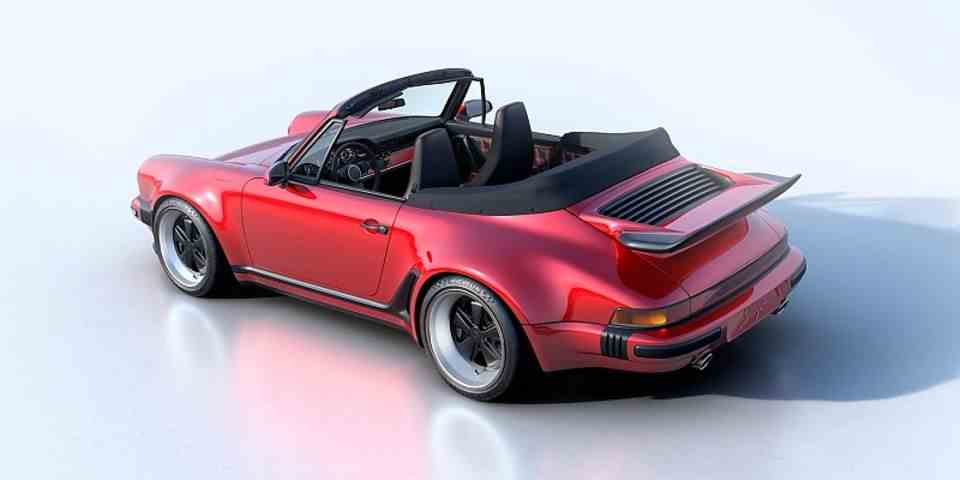Fascination: Porsche 911 Cabriolet reimagined by Singer
Singer takes off the hood
Porsche 911 Cabriolet reimagined by Singer
© press-inform – the press office
With the Porsche 911 Cabriolet reimagined by Singer, the American Porsche tuner Singer is creating a convertible for the first time. As always, the basis is a Porsche 964, whose body with fiberglass and carbon elements is given the wide-cheeked turbo look. The power comes from a 3.8-liter bi-turbo boxer with 510 hp.
Singer has made a name for itself worldwide as a Porsche refiner. As with Coca Cola, the West Coast tuners have retained the original recipe: Take a Porsche 911 from the 964 series that has been preserved as well as possible and modify it with modern components so that the car is more powerful, but as little as possible of its own flair loses. But as is the case with Coca Cola, every now and then a new flavor is needed. What the Cherry Coke or Coke Zero is for a soft drink, a Porsche 964 Turbo Cabrio is for Singer. The first Porsche with a fabric hood modified by Singer.
If you’re breaking new ground, then do it right. After all, the customer is king. So, at the request of some owners, the Los Angeles tuners took a Porsche 964 convertible and turned it into a turbo model. That never existed at Porsche, only the 964 Carrera 2 Cabriolet Turbo look, which was sold in the USA as the “America Roadster” based on the 356 model from 1953. This model is the inspiration for the new edition of the Porsche 911 Cabriolet reimagined by Singer. So it’s a good thing that you have a blueprint in-house with the “Turbo Study”. To create the turbo look, Singer bodybuilders use carbon and fiberglass elements. The result is a significantly lower weight, improved aerodynamics and more rigidity, which has a positive effect on agility and coordination compared to the original.
Any modification made by US tuners starts with the powertrain. So Singer puts a modified Mezger boxer engine in the wide rear. The double-charged L engine has a displacement of 3.8 liters, electric wastegate valves and delivers 375 kW / 510 hp. Air-cooled, of course. For comparison: In the original 964 Turbo S, the 3.6 liter engine (M64) worked with an output of 265 kW / 360 hp. Even with the Singer variant of the 964 Porsche, only the rear axle provides propulsion.
Such a powerful engine must be cooled accordingly. That’s why the Singer bodybuilders also use the specially designed “shark fin” on the rear fender as part of the intake tract to supply cold air to the engine. In addition, tailor-made air-water intercoolers are integrated into the intake manifold. The tuners use a six-speed manual transmission for this Porsche 911 reimagined by Singer. Delayed with carbon ceramic brakes. The tuning of the chassis is not trimmed uncompromisingly tightly for sportiness, but tuned comfortably for longer distances. Anyone who knows the sometimes horrendous quality of US roads knows how wise this decision is.
Such a powerful engine must be cooled accordingly. That’s why the Singer bodybuilders also use the specially designed “shark fin” on the rear fender as part of the intake tract to supply cold air to the engine. In addition, tailor-made air-water intercoolers are integrated into the intake manifold. The tuners use a six-speed manual transmission for this Porsche 911 reimagined by Singer. Delayed with carbon ceramic brakes. The tuning of the chassis is not trimmed uncompromisingly tightly for sportiness, but tuned comfortably for longer distances. Anyone who knows the sometimes horrendous quality of US roads knows how wise this decision is.


